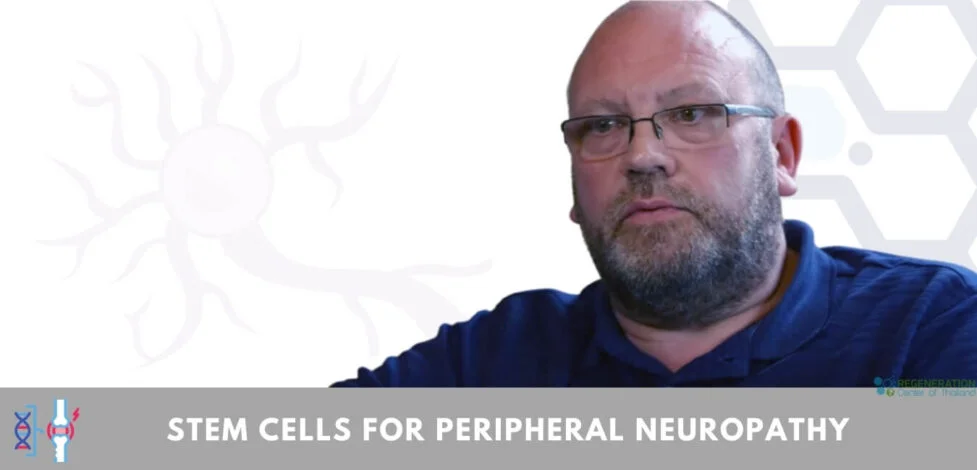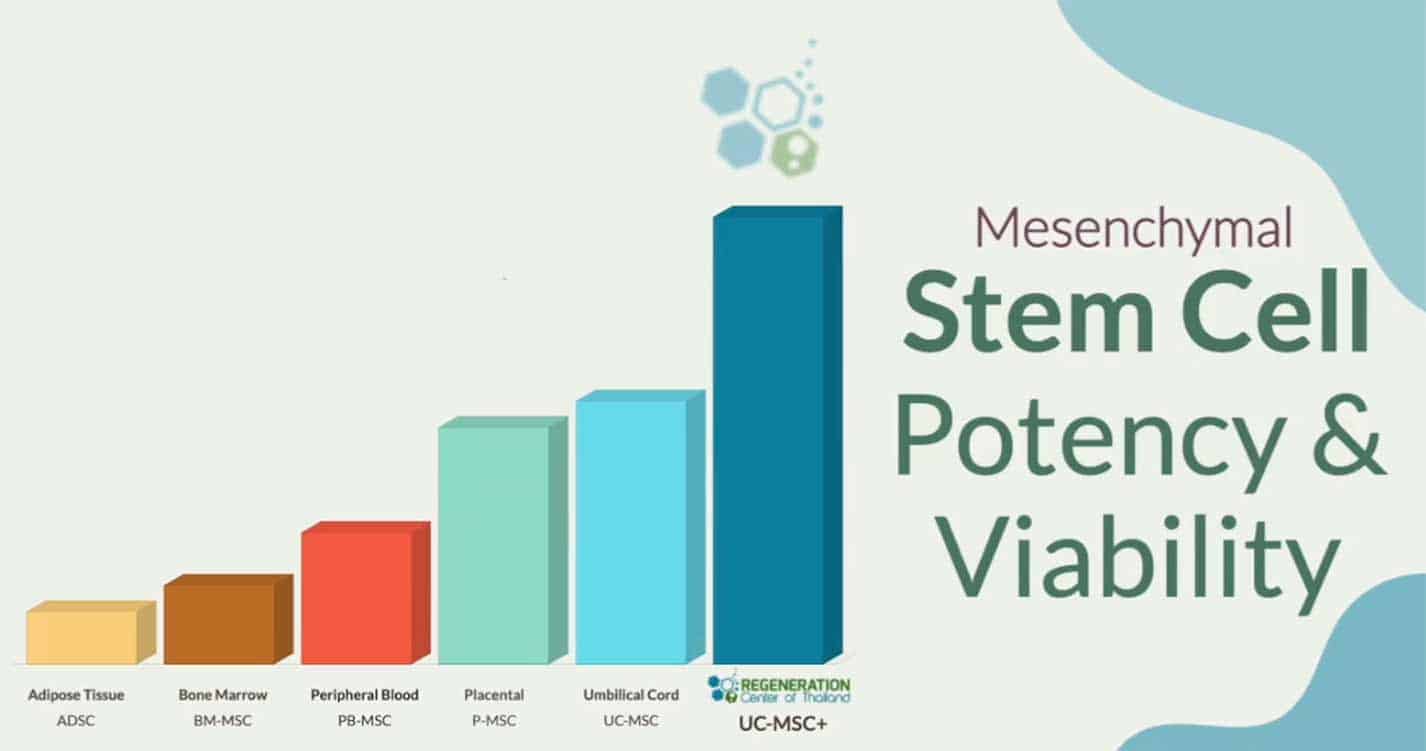An estimated 180 million people in the world have some type of peripheral neuropathy or “PN” which accounts to nearly 8% of the global population. PR disease develops over time due to damage to our communication network known as the peripheral nervous system. Neuropathy means nerve damage or never disease/disorder of signals between our brain and spinal cord (central nervous system) and other parts of our bodies. Human Peripheral nerves are responsible for sending sensory information to our brain and spinal cord. The Peripheral nerves are also responsible for carrying movement signals from our spinal cord and brain to generate proper muscle movement. Any damage to our peripheral nervous system will interfere with these signals similar to static in a tv or telephone signal. A patient with peripheral neuropathy is unable to communicate properly between his/her brain and spinal cord due to the interference in the signal. [1]
Peripheral Neuropathy & Nerve Damage
Symptoms of Peripheral Nerve Damage
Symptoms for patients peripheral nerve damage depends entirely on which type of nerves are damaged ( motor nerves, sensory nerves or autonomic ). As the name suggest, Motor nerves help control our voluntary responses of muscles needed in actions such as grabbing things, walking or talking. Sensory nerves are responsible for transmitting the brain information about touch or pain injuries. Autonomic nerves are non-voluntary and help manage proper organ functions such as digesting food, beating the heart or breathing. We do not have to think about breathing in and out our lungs manage the process automatically. Some rare cases of peripheral neuropathies can affect all 2 types of nerves but most diagnosis for patients usually effect just one or two types of nerve damage.
Most diagnosis of peripheral nerve disease are categorized as one of the following: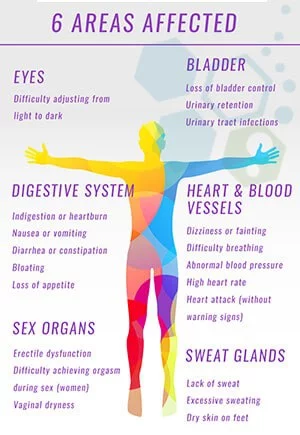
- Autonomic neuropathy
- Idiopathic Peripheral Neuropathy
- Predominantly sensory neuropathy
- Predominantly motor neuropathy
- Sensory-motor neuropathy
- Diabetic neuropathy
- Small fiber neuropathy
- Alcoholic neuropathy
- Multifocal motor neuropathy
- Optic neuropathy
- Peroneal neuropathy
Damage to the Motor nerves is commonly seen as muscle weakness but may also produce uncontrolled muscle twitches (fasciculations), painful muscle cramps, muscle atrophy with decreased reflexes similar to patients who are diagnosed with Ataxia, ALS, Motor Neuron Disease, Alzheimer and Parkinson’s disease. A diagnosis of sensory nerve disease manifests itself as a variety of symptoms due to their broad range of uses/functions. Large sensory fibers in myelin sheath are responsible for identifying vibrations and light touches. Any damage to the large sensory fibers will impair the sensation of touch. This type of nerve damage affects the hands and feet causing them to feel like they are wearing a pair of gloves on the hands or stockings on the legs even though they are not wearing either. This type of damage makes men and women unable to coordinate complex muscle movements like running or fastening shirts, or even maintain proper balance when eyes are closed.
Neuropathic Pain
Smaller sensory fibers are responsible for transmitting the sensation of temperatures and pain. Patients diagnosed with damage to smaller sensory fibers may not be able to sense injury from an accident or that a wound has become infected. They also might not be able to detect the bodies signal of chest pain ( impending heart attack ). The Loss of our pain sensation is especially critical for patients with diabetic induced neuropathy results in a very high rate of limb amputations. Diabetic neuropathy is one of the most common types of peripheral nerve disease.[2]
Neuropathic induced pain is a very common condition that seriously affects the emotional well-being and quality of life for a patient. Neuropathic pain also disrupts sleep further compounding the physical burden of having sensory nerve damage. Neuropathic pain and allodynia are associated with hypersensitization of pain receptors in our skin resulting in the feeling of severe pain from stimuli that would normally be painless. If left untreated, sensory neuropathy will lead to negative changes in a patients hair, skin/joints resulting in ligament damage, bone damage & osteoarthritis.
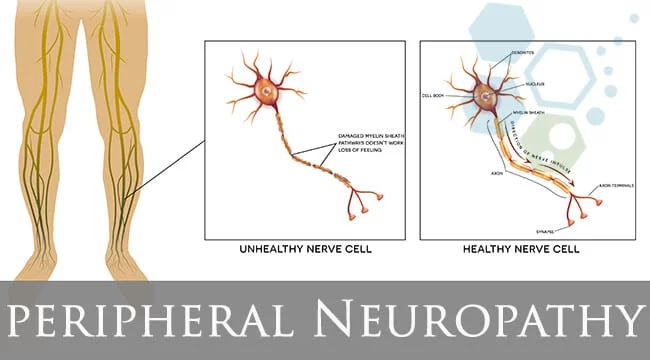
Autonomic nerve disease symptoms are also very diverse in nature due to the fact that our sympathetic & parasympathetic nerves just about every organ in the human body. Commonly associated symptoms of autonomic nerve damage “AND” include the inability to perspire/sweat normally resulting in heat intolerance and can be identified using modern functional medical tests. Other symptoms include:
- A loss of bladder control
- Inability to control muscles and posture leading to Knee Injuries or Degenerative Disc Herniation
- Inability to contract or expand blood vessels that regulate blood pressure.
- Irregular heartbeat
- Impaired digestion
- Loss of sweating
- Loss of sexual function and ED
- The inability for proper urination.
- In extreme cases involving the lungs, breathing becomes difficult leading to lung failure.
- Sciatic Nerve Injury
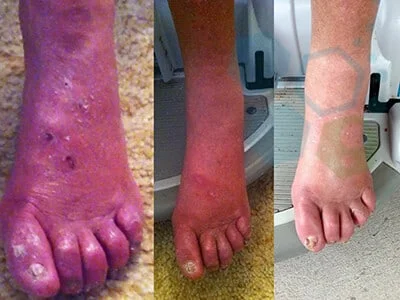 Most patients with autonomic neuropathy also display gastrointestinal symptoms due to a nerve malfunction of the intestinal muscle contractions which leads to incontinence, diarrhea, and constipation along with problems eating or swallowing.
Most patients with autonomic neuropathy also display gastrointestinal symptoms due to a nerve malfunction of the intestinal muscle contractions which leads to incontinence, diarrhea, and constipation along with problems eating or swallowing.
Symptoms of peripheral nerve damage can be experienced over a few days, months, or years and can be classified as acute or chronic. Acute neuropathies occur when symptoms appear unexpectedly, progress rapidly, and resolve very slowly. In chronic neuropathies, symptoms usually appear subtly and progress very slow. Some patients may show signs of relief followed by relapse in symptoms. For others, they reach a plateau where symptoms usually stay consistently the same for months or even years. Most cases of chronic peripheral neuropathy and Ankylosing spondylitis worsen over time and become extremely painful and debilitating with some cases becoming terminal due to compounding medical issues such as diabetes or brain strokes. [3]
The Primary Causes of Neuropathy disease include:
- Diabetes mellitus. The most common cause of PN, research has shown that about 45% of diabetics eventually develop peripheral neuropathy disease, diabetic retinopathy or Diabetic nephropathy which leads to Polycystic kidney disease, heart attacks and/or Kidney Failure
- Toxic Exposure. The most common toxins found in alcoholic drinks (alcoholic neuropathy). Exposure to Chemotherapy and lead are also known causes of peripheral nerve damage and ataxia.
- Systemic organ failures due to hypothyroidism, vitamin deficiencies or other diseases such as herpes or HIV infections.
- Multiple autoimmune syndromes including Systemic lupus erythematosus (SLE), Primary Progressive Aphasia (PPA), Guillain-Barre’ syndrome and CIPD (Chronic Inflammatory Demyelinating Polyneuropathy) and lyme disease
- Environmental factors that occur due to repeated injuries or severe hypothermia
- Hereditary – Genetic predisposition to PND
- Idiopathic causes – Idiopathic means that the cause is unknown and up to 20% of patients diagnosed with the disease can fall into this category.
Diagnosis of Peripheral Neuropathy
The diagnosis of Peripheral neuropathy requires multiple tests to confirm and it has many potential causes. A patient displaying symptoms should start with a full physical exam including blood tests. To confirm a diagnosis further testing is usually needed. Tests include:
- Neurological examination – To check tendon reflex, muscle strength and the ability to feel sensations along with checking coordination and physical posture.
- Blood tests – to check for diabetes, vitamin deficiencies, abnormal immune responses, and other indications.
- Genetic Testing for Hereditary Neuropathy
- Imaging tests. MRI or CT to look for any herniated or degenerative spinal disks, tumors or other abnormalities that might be causing the improper nerve response.
- Nerve function tests such as “EMG” ( Electromyography ) to measure electrical activity in the muscles and detect any nerve damage. An electrical probe sends signals to the nerves, and an electrode is placed along the pathway to record/measure the nerve’s response. This type of test is also known as a nerve conduction test.
TREATMENT PRECAUTIONS & RISKS
Please note that not all patients are good candidates for the treatment of Neuropathy with Stem cells or stem cell therapy for nerve damage. Patients with late stage, severe underlying conditions or travel restrictions may not qualify for the 2-week treatment protocol.Natural Treatment for Neuropathic Pain
Treatment options for polyneuropathy depend on the underlying causes. For patients with diabetes or vitamin deficiencies, treatment often entails directly treating the underlying cause of their peripheral neuropathy diagnosis. Other measures such as removing toxins or negative environmental factors can be used to treat mild conditions. Patients diagnosed with autoimmune neuropathy usually require much more aggressive therapies including:
- Intravenous Immunoglobulin therapy
- Glucocorticoids therapy (High dose steroids)
- Therapeutic plasma exchange (TPE)
Current medications such as carbamazepine, Gabapentin, topiramate, Tricyclic antidepressant medications ( amitriptyline desipramine), Pain medications like ibuprofen or tramadol are used to mask the symptoms but do not do much as far as treatment of the underlying causes.
1 Year After Stem Cells for Nerve Damage (Foot Drop)
Stem Cell Therapy for Neuropathy in 2024
Mesenchymal Stem cell therapy (MSC+) and paracrine signaling offer a unique and effective modern treatment option for patients suffering from neuropathy nerve damage and neuropathic pain. Unlike traditional treatments that respond poorly to opioid and OTC analgesics our MSC+ enhanced cell therapy uses a multi-layer combination therapy consisting of MSC+ hematopoietic 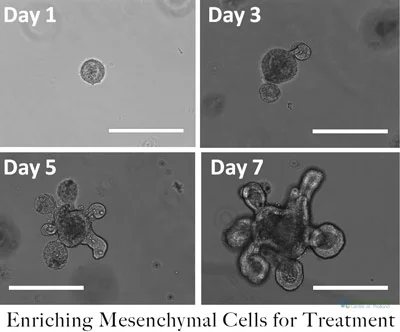 stem cells, leukocytes, red blood cells, CD90 positive cells, CD31 positive cells, CD45 cells and endothelial cells to precisely repairing the damage on the tissue nerve level and recover lost functions. MSC Stem cell treatments focus on the root of the underlying issue (nerve damage) not just temporarily mask the symptoms with pain killers.
stem cells, leukocytes, red blood cells, CD90 positive cells, CD31 positive cells, CD45 cells and endothelial cells to precisely repairing the damage on the tissue nerve level and recover lost functions. MSC Stem cell treatments focus on the root of the underlying issue (nerve damage) not just temporarily mask the symptoms with pain killers.
We treat neuropathic pain and create anti-inflammatory zones through the release of cytokines that play a vital role in nerve regeneration. The cell injection protocol we offer have been clinically proven to decrease proinflammatory (IL)-1β interleukin cytokine while increasing the anti-inflammatory (IL-10) cytokines in the lesioned nerve, along with a significant reduction in mechanical allodynia & thermal hyperalgesia. The general consensus among our patients who had stem cell therapy for pain reduction was overwhelmingly beneficial and positive after the 1-2 week stem cell therapy. The treatment we offer is very safe with minimal side effects such as drowsiness and minor weight gain.[4]
The cells used in the treatment are multipotent hematopoietic & undifferentiated cells taken from adult sources depending on the patients’ needs. The harvested cells are non-immunogenic and 100% matched to the patient.[5]
Neuropathy Treatment Evaluation, Guidelines & Costs
Get safe and permanent treatment for neuropathy at the Regeneration Centre. It you or a loved one are suffering from neuropathic pain or neuropathy you/they are probably in unnecessary physical agony and should try to get out of the painful situation as early as possible. Having a clear diagnosis with recent test results is an important step in treating the condition with stem cells. Our request for a medical review can be done online and will enable our medical team to better understand your need before suggesting an effective protocol that will be used to treat this condition. Please note the treatment does require travel to our stem cell hospital in Thailand for the estimated 2 week therapy course. Our pain management solutions help solve the root of the pain issues to safely improve the quality of life for our patients. If your daily activities are being affected by neuropathy, please contact us today. Our team of medical professionals are experienced and trained in dealing with several types of pain conditions to ensure your condition improves as quickly as possible so you can get back to a normal life completely free of any discomfort or pain that comes with Peripheral Neuropathy.
Published Clinical Citations
[1] ^ Gerawarapong, Chinapat. 2015. Association of Peripheral Autonomic Neuropathy and Sympathetic Skin Response in the Patients with Diabetic Polyneuropathy: A Pilot Study in Thailand. Journal of the Medical Association of Thailand = Chotmaihet thangphaet, no. 12. https://www.ncbi.nlm.nih.gov/pubmed/27004308
[2] ^ Han, Ji Woong, Dabin Choi, Min Young Lee, Yang Hoon Huh, and Young-sup Yoon. 2015. Bone Marrow-Derived Mesenchymal Stem Cells Improve Diabetic Neuropathy by Direct Modulation of Both Angiogenesis and Myelination in Peripheral Nerves. Cell transplantation, no. 2 (May 13). doi:10.3727/096368915X688209. https://www.ncbi.nlm.nih.gov/pubmed/25975801
[3] ^ Kosachunhanun, Natapong, Siam Tongprasert, and Kittipan Rerkasem. 2012. Diabetic foot problems in tertiary care diabetic clinic in Thailand. The international journal of lower extremity wounds, no. 2 (May 2). doi:10.1177/1534734612446967. https://www.ncbi.nlm.nih.gov/pubmed/22553278
[4] ^ Nayagam, Bryony Ariya. 2012. Human stem cells ameliorate auditory evoked responses in a model of neuropathy. Stem cell research & therapy, no. 6 (November 8). doi:10.1186/scrt135. https://www.ncbi.nlm.nih.gov/pubmed/23134736
[5] ^ Puataweepong, Putipun, Mantana Dhanachai, Ake Hansasuta, Somjai Dangprasert, Chomporn Sitathanee, Thiti Swangsilpa, Patamintita Vitoonpanich, and Pornpan Yongvithisatid. 2015. Outcomes for Pituitary Adenoma Patients Treated with Linac- Based Stereotactic Radiosurgery and Radiotherapy: a Long Term Experience in Thailand. Asian Pacific journal of cancer prevention : APJCP, no. 13. https://www.ncbi.nlm.nih.gov/pubmed/26225666

